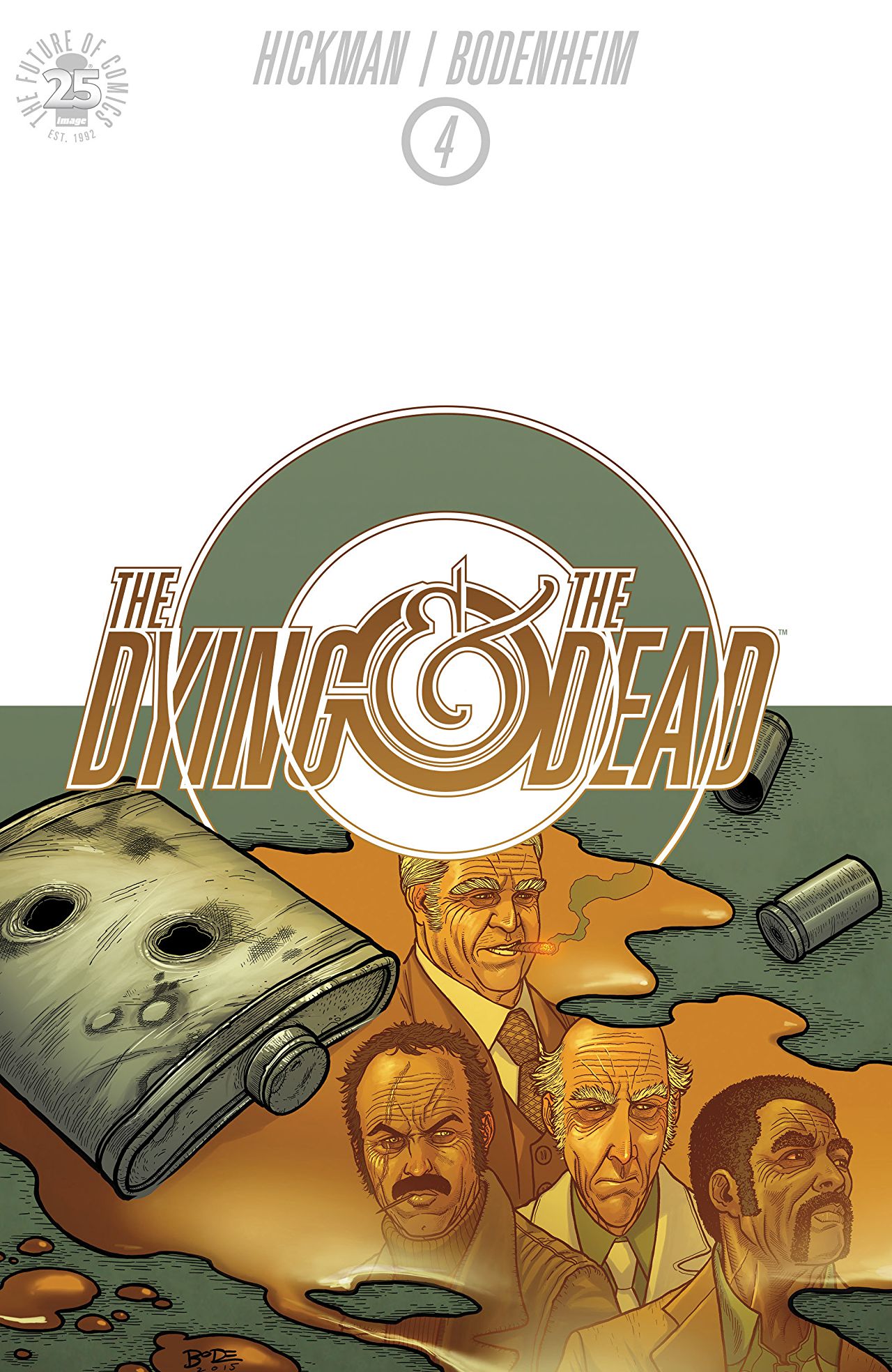 Author: Jonathan Hickman
Author: Jonathan Hickman
Artist: Ryan Bodenheim
Publisher: Image Comics
Source: Image Comics ARC
★★★★☆
After two years off of comic shop shelves, The Dying And The Dead #4 faces the unenviable challenge of reminding readers why they cared about the series. In that regard, it doesn’t quite succeed, feeling most like a companion piece to the flashback that formed the backbone of issue #3, a comic that many readers may have forgotten the intricacies of.
However, if you’ve recently revisited the series or savor every scrap of writer Jonathan Hickman’s heady pulp stories, it’ll feel both familiar and satisfying to see more of the secrets and lives of these characters filled in.
This issue sees Canning and his team heading into Europe after the hammer while a resurrected Shurra leads a Bodari strike team into the hospital to kidnap Edward’s comatose wife. The bulk of the story here though is in an extended flashback to the team’s first encounter with the hammer. We see a young Edward lead the team into what appears to be a suicide drop over Germany after getting top secret orders from a wary military official.
It’s an interesting chance to see some of what has been implied throughout the first three issues actually be revealed. We get a peek at Doyle’s developing alcoholism and the lengths he goes to drown his trauma in bourbon, as well as a look at why Finn was colored blue in his first appearance, as his indecision and refusal to face his fate leads to a major confrontation with Edward. It’s all drawn and colored beautifully, with Ryan Bodenheim’s expressive figures as strong as ever and Michael Garland’s evocative primary colors emphasizing the choices these characters make or ultimately avoid.
The Dying and The Dead #4 probably would have read stronger if it had come out closer to the issue it’s so closely connected to, but it still has the power to remind readers why this moody pulp mash-up works so well. It’s provocative, surprising, and constantly doling out answers that just lead to deeper more difficult questions. It’s as pure of an example of Hickman’s fascination with puzzle-box storytelling as it gets and a reminder of what he and his collaborators are capable of doing at their best.
